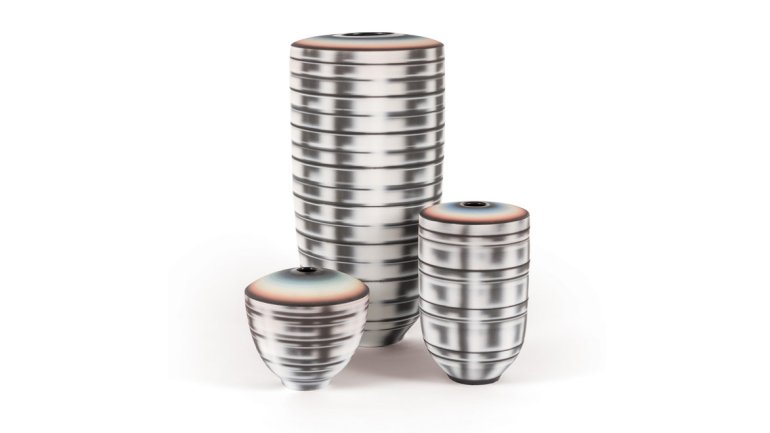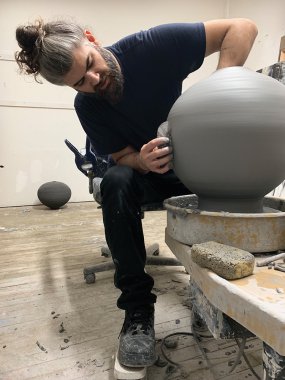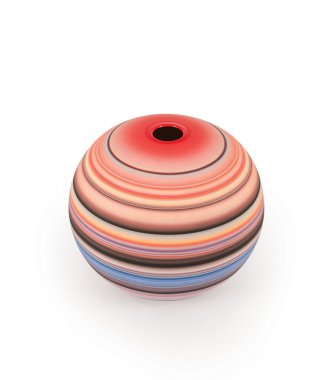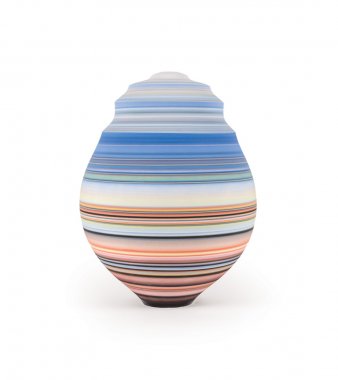Coming to Light
Coming to Light
Michael Dickey’s mother likes to say that her son learned to name colors before he could count.
“I’m not sure if that’s true or just something cute to say,” Dickey says with a laugh. Nevertheless, he did grow up immersed in art in the small town of Elizabeth, Colorado, where his mother, mixed-media artist Roxanne Rossi, was also his high school art teacher.
After graduating from Colorado State University with a BFA in 2002, Dickey moved to New York City to pursue a painting career. In the Brooklyn studio he continues to rent, he created abstract acrylic landscapes in muted tones. Then, in 2012, he decided to take a course in wheel throwing purely for fun – a whim that has turned into a serious pursuit.
From the moment he first touched clay, Dickey, 40, says he “became obsessed,” practicing his wheel skills whenever he could. “I grew up playing a lot of sports, mostly baseball, and the physicality of throwing clay, of honing those skills, felt so good,” he says. “I love the focus you need, being engaged in the whole process with your entire body. It’s very different from painting, which is almost more theoretical than physical.”
For his first pots, Dickey used mostly black and white matte finishes, including iron paint for its rust effects. But after a few years of improving his throwing skills, he was ready to take another chance; he started adding bright stripes, which made the pots look as if they were in motion, like spinning tops. “When I decided that color was interesting and I wasn’t going to be afraid of it, I went as colorful as I could.”
The artist likes to challenge himself both in scale (he has thrown pots up to 36 inches tall) and color, employing mostly matte glazes, not only for surface design but also to trick the eye. Recent pots look as though they’re in a spotlight or lit from within. To achieve the trompe l’oeil effect, he may brush on as many as 50 applications of color across a single pot while turning it on a banding wheel. “I hold my breath for every stripe,” he says of the delicate process. “I’ve thrown away hundreds of pots to get to where I can do this right.”
In 2018, Dickey exhibited at the American Craft Show in Baltimore and the Smithsonian Craft Show in Washington, DC, two high-profile fairs that immediately boosted his status as a ceramist. “I still paint, and it’s still important to me,” he says, “but with the ceramics I stand out in a way that I don’t with my painting, at least right now.”
Dickey says that it helps that the craft community is so welcoming and accessible compared with the fine art world – “like a meritocracy, instead of ‘who you know,’ ” he says. “It’s refreshing to think I can just let the work speak for itself.”







